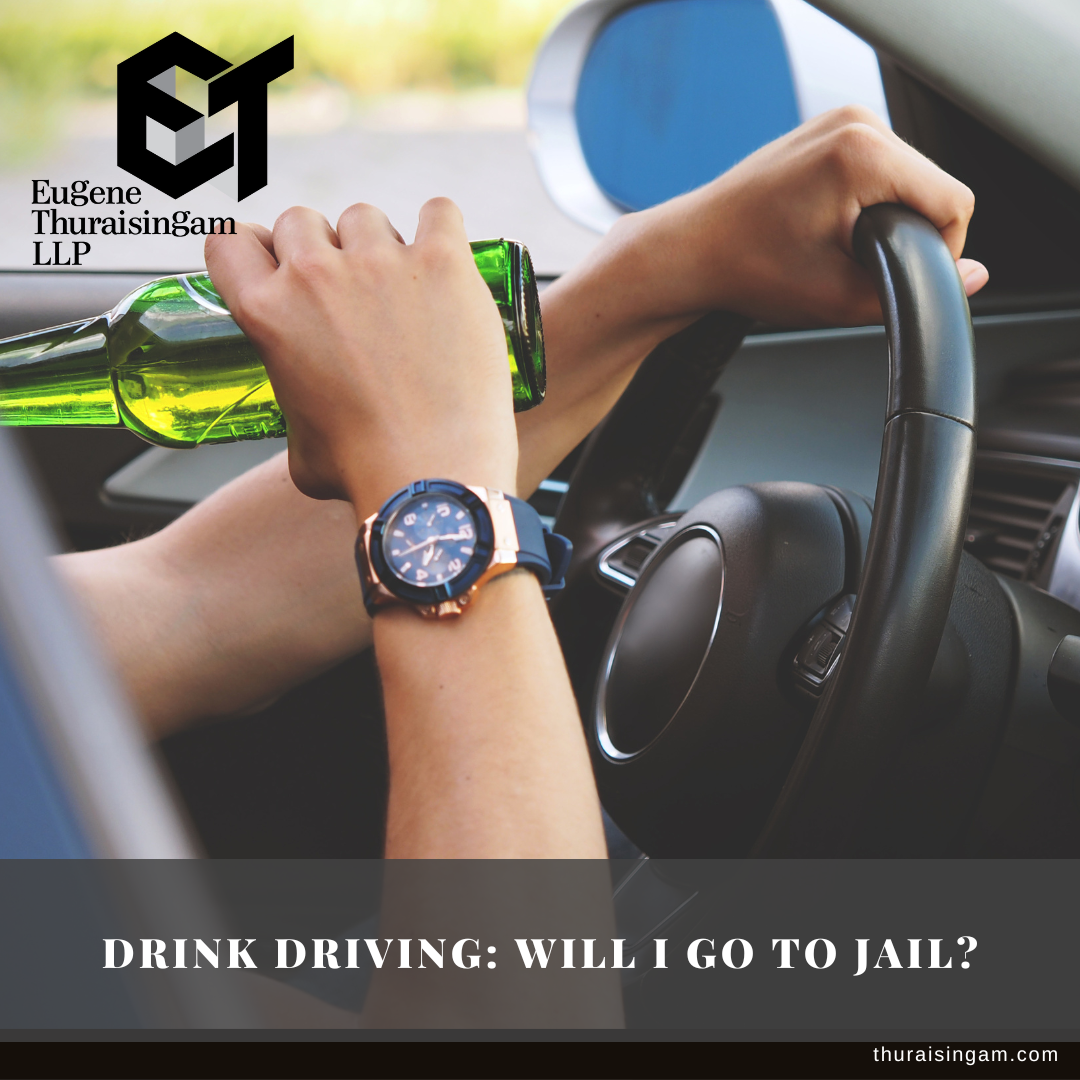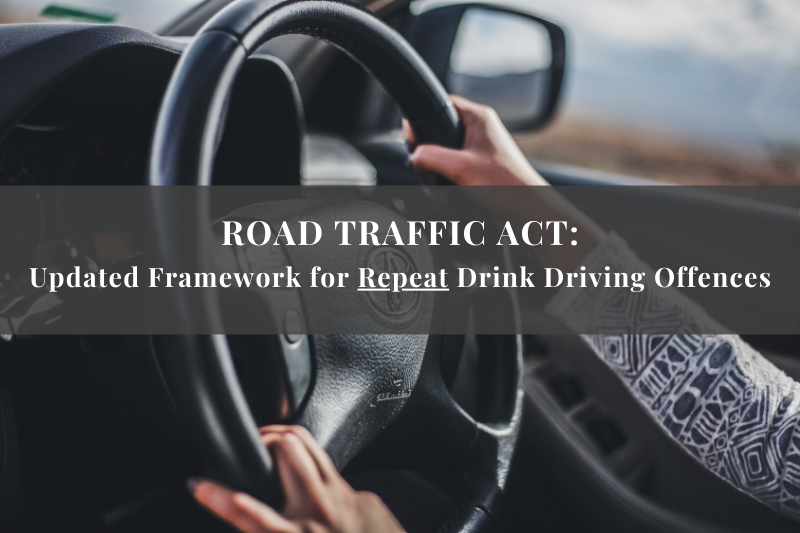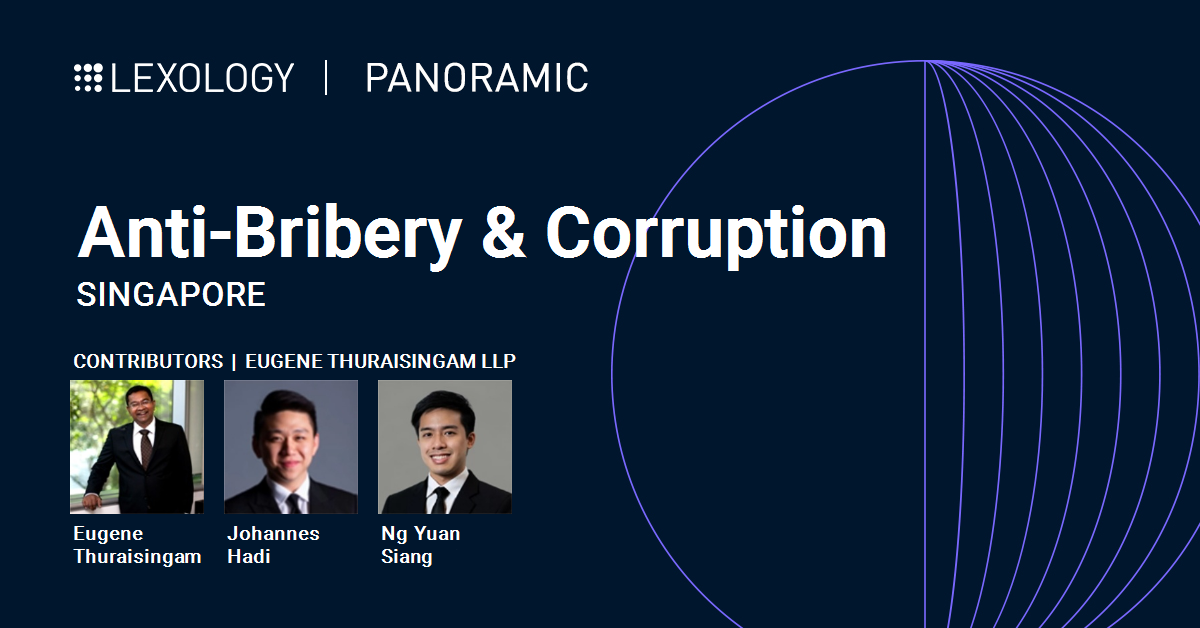Drink Driving: Will I Go To Jail?
What is the offence of drink driving?
Driving under the influence of alcohol is an offence under Section 67 of the Road Traffic Act.
You may be found guilty of this offence if you are:
- Unfit to drive under the influence of alcohol to the extent that you are incapable of having proper control of the vehicle, or
- Your breath or blood alcohol level exceeds the legal limit[i]
Thus, even if your alcohol level is below the legal limit, you can still be guilty of the offence if you are incapable of controlling your vehicle.
Likewise, if you have proper control of your vehicle, but your alcohol level is above the limit, you may still be found guilty of the offence.
The legal alcohol limit is 35 microgrammes of alcohol in 100 millilitres of breath, or 80 milligrammes of alcohol in 100 millilitres of blood.[ii] The police can require you to provide a specimen for analysis. If you refuse to comply, you can be subject to the same punishments as the offence of drink driving, provided that the police officer has warned you of the consequences of non-compliance.[iii]
What are the penalties for drink driving?
If you are convicted of drink driving, you could get a fine of between $2,000 to $10,000 and/or up to 12 months’ jail if it is your first time. Repeat offenders can be fined between $5,000 to $20,000 and/or get up to 2 years’ jail.[iv]
You will also be disqualified from holding or obtaining a driving license for at least 2 years for a first offence, or at least 5 years for repeat offenders, unless the court has special reasons to decide otherwise.[v] Such special reasons are rarely fulfilled.
How will the exact punishment be determined?
When deciding on the exact punishment (or “sentence”) for someone who is convicted of drink driving, the court will first have regard to the level of alcohol per the table below:
| Level of alcohol (μg per 100ml of breath) | Range of fines | Range of disqualification |
| 36–54 | $2,000–$4,000 | 24–30 months |
| 55–69 | $4,000–$6,000 | 30–36 months |
| 70–89 | $6,000–$8,000 | 36–48 months |
| ≥ 90 | $8,000–$10,000 | 48–60 months (or longer) |
Note: these guidelines are only applicable where no harm to person or property is caused.
Then, the court will examine whether there are any aggravating or mitigating factors before arriving at the final sentence. Aggravating factors will result in a higher sentence, while mitigating factors will result in a lower sentence.
Aggravating factors include:
- The actual or potential danger posed by the offender’s conduct due to their manner of driving
- Circumstances that increase the danger to road users (e.g. driving within a residential or school zone)
- The consequences of the act (e.g. a collision or accident that has caused property damage, injury or even death)
- Conduct upon being arrested (e.g. being violent or refusing to cooperate)
An offender’s reason or motivation for driving may be either an aggravating or mitigating factor. For example, if you were driving a passenger for hire, it would increase the gravity of the offence. On the other hand, if you were driving because you were faced with an emergency, it could be a mitigating factor that justifies a lower sentence.
Whether or not jail time will be imposed depends on whether there are egregious or aggravating circumstances—for example, when injury or property damage has been caused. If no such circumstances exist, a fine is generally the norm for a first-time offender.
Enhanced penalties for a “serious offender”
If you are also convicted of either reckless or dangerous driving (Section 64) or driving without due care or reasonable consideration (Section 65) based on the same set of circumstances as your conviction for drink driving, you will be treated as a “serious offender” and be subject to enhanced penalties for those offences.
If you are convicted of drink driving and reckless or dangerous driving (Section 64), the punishment is potentially very serious and likely to result in you going to jail. In the case of Wu Zhi Yong v Public Prosecutor [2022] 4 SLR 587, the court held that a jail term was likely in many cases even when there was no personal injury or damage to property caused, which is the least serious category of this offence.[vi]
For cases in this category, the court will first determine which “band” your case falls into, having regard to the following offence-specific aggravating factors:
- Serious potential harm
- Serious property damage
- High alcohol level found in the offender’s blood or breath
- An offender’s reason or motivation for driving (e.g. driving a passenger for hire)
- Increased culpability, including a particularly dangerous manner of driving
- The offender’s conduct following the offence or attempt to evade arrest
| Band 1: Cases at the lower level of seriousness, with no offence-specific aggravating factors present or where they are present only to a limited extent, blood alcohol at lowest or second lowest bands in Rafael Voltaire Alzate | A fine of between $2,000 and $15,000 and/or up to 1 months’ imprisonment and a disqualification period of 2 to 3 years. |
| Band 2: Cases reflecting a higher level of seriousness and would usually contain two or more offence-specific aggravating factors. In these cases, the level of culpability and the blood alcohol level will typically both be on the higher side. | Between 1 months’ and 1 years’ imprisonment and a disqualification period of three to four years. |
| Band 3: Most serious cases of reckless or dangerous driving whilst under the influence of drink. There will be multiple aggravating factors suggesting higher levels of culpability and higher alcohol levels. | Between one year’s and two years’ imprisonment and a disqualification period of four to five years. |
As can be seen from the table above, the range of punishment can be harsh even when there was no personal injury or damage to property caused. It has been held that a fine would generally be appropriate only where the offence is not aggravated and falls at the lowest end of Band 1.
In any case, the band is just an indicative starting point. Then, the court will decide on the final sentence upon considering any relevant aggravating and mitigating factors.
Aggravating factors include offences taken into consideration for the purposes of sentencing, whether you have committed similar offences before, and evidence showing a lack of remorse. Mitigating factors include evidence of genuine remorse and being of a young age.
Bearing in mind that these sentencing guidelines apply to the least serious category of reckless or dangerous driving, the punishments are likely to be harsher if there is hurt, grievous hurt, or death caused as a result.
The high penalties reflect the harsh stance taken towards people who drive dangerously under the influence of alcohol, and the recognised need to deter this kind of behaviour. During the parliamentary debate to pass the amendments to the Road Traffic Act in 2019, Mrs Josephine Teo, the Second Minister for Home Affairs, explained the reasoning behind the enhanced drink driving provisions as follows:
“Drivers who are drunk or drug-impaired show a blatant disregard for the safety of other road users. They are one of the biggest contributors to serious accidents on our roads. These are also accidents that clearly could have been avoided if the motorist had not come under influence or did not drive.
Our intention is for offenders driving under influence to face stiffer penalties to signal the aggravated seriousness of their actions.”[vii]
To be on the safe side, if you drink, don’t drive.
Disclaimer: This article is not to be taken as legal advice. Please contact us for any queries.
***
[i] Road Traffic Act Section 67(1)
[ii] Road Traffic Act Section 72
[iii] Road Traffic Act Section 70
[iv] Road Traffic Act Section 67(1)
[v] Road Traffic Act Section 67(2)
[vi] Road Traffic Act Section 64(2C)(c)
[vii] Singapore Parliamentary Debates, Official Report (8 July 2019), vol 94






